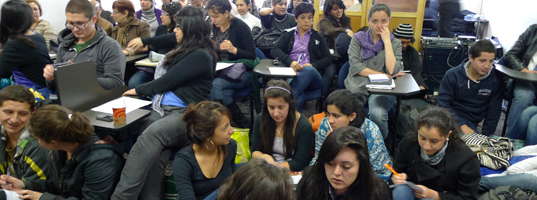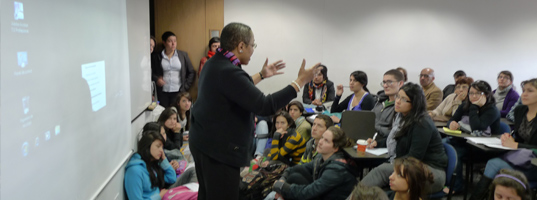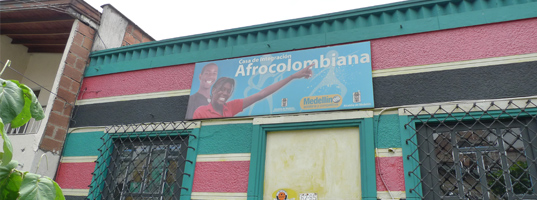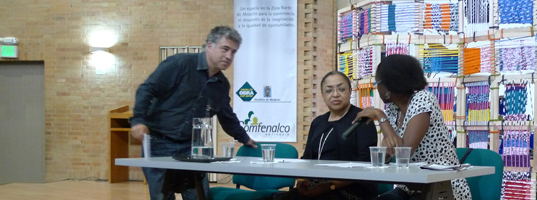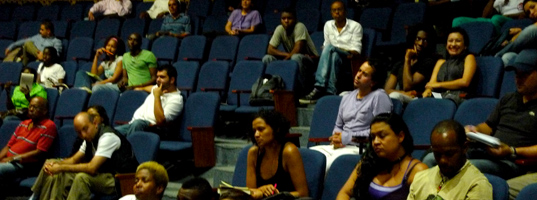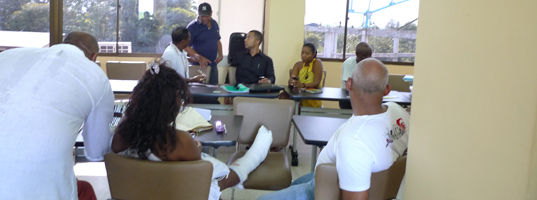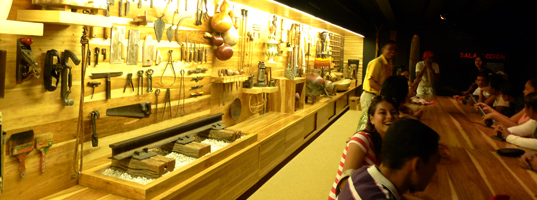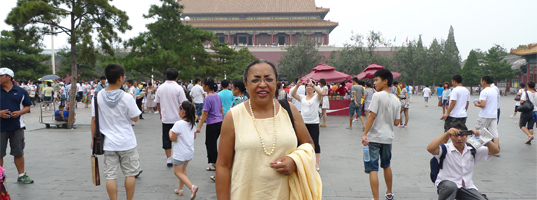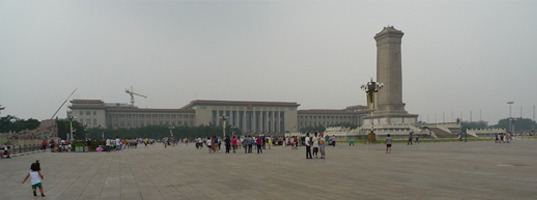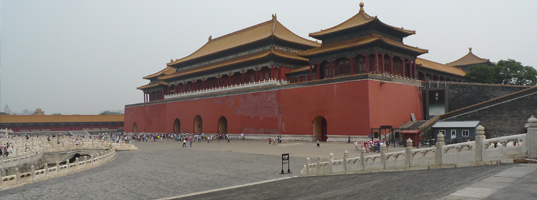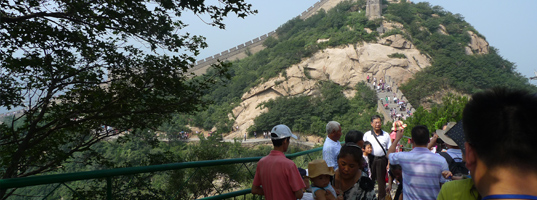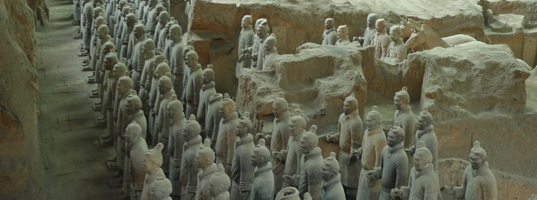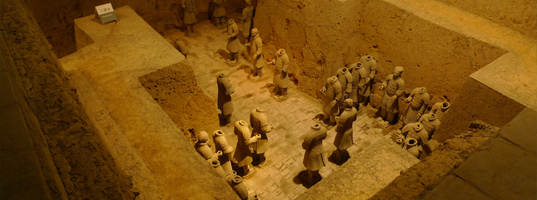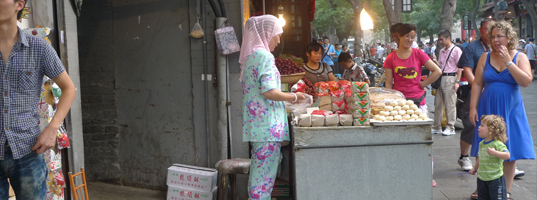The goal of the Museo Nacional de Colombia proposal to the U.S. Department of State was to gain insight from an experienced U.S. museum professional on strategies and considerations for incorporating the history and culture of Afro-Colombian descent (aka Afrocolombians) into the content and visual presentation of the museum. North America’s economic legacy of slavery, legal struggle for civil rights and extensive network of African American museums have tackled the impact of enslaved labor in United States. Thus, there are rich resources for institutions on building museums and archives as well as shaping exhibitions and education which are substantial sources of comparison. The Museo Nacional’s request came on the heels of the response to the groundbreaking and ambitious exhibition at the Museo Nacional de Colombia on Afrocolombian religious and spiritual practices. Thanks to the foresight of the Curator of Art and History, the exhibition became the first attempt to incorporate the thoughts, opinions and cultural knowledge of Afrocolumbians into a project.
The Museo Nacional’s curator, Cristina Lleras, developed the exhibition with the collaboration and anthropologist Sofia Gonzales. Lleras and Gonzales forged conversations with individuals and organized groups, who rightly were suspicious of the Museo Nacional’s intention, because their opinions had not necessarily been sought before. Yet, representatives from Afrocolombian organized groups were invited and came to the museum to share their points of view. The groups included Raizal People from the Colombian Caribbean Island, a network of teachers, university students, Ancestry Threads (Yoruba inspired religious practitioners) and a core group of university students who were paid modest sums to do research for the exhibition. The subject of the practices of spirituality was the compromise subject selected by the invited groups for the first Museo Nacional sponsored project to attempt to dramatize the multi-faceted Afrocolombian community.
Titled Velorios Itinerant y Santor Vivos, the exhibition examined, through an open/immersion installation format, a glimpse into how communities honored their living and dead. The exhibition’s life was extended by an unique technique wherein anthropologist, Sofia Gonzales, traveled to over 20 sites to help local communities install their own homage to their spiritual practices as a temporary exhibition (alters and etc.) with poster-size interpretative panels provided by the museum as an accompanying explanation. Thus, each community could celebrate itself while recreating an important act of homage.
The larger context of the Mueso Nacional desire for input is the fact that The 1991 Columbia Constitution and Law 70 (1993) was designed to recognize the historical discrimination of Afrocolombian communities, and address the consideration, of which the law infers, that Afrocolombian be consulted on issues impacting their natural resources and, by extension, their cultural history. The proposed role of the Cultural Envoy was to have conversations with Museo Nacional staff on strategies to incorporate the Afrocolombian into interpretative material including exhibitions. However, the Embassy and Museo Nacional staff saw it as an opportunity for the US Cultural Envoy’s experience, as a museum professional and United States Accreditation Commissioner, to be shared with Museum Studies students and other professionals. The other topics added to the roster were issues of standards, collections, education and accreditation, along with related topics involving management of cultural property. The expanded opportunity entailed the US Cultural Envoy’s travel to the following cities and topics of discussion which were translated in various ways for listeners. A major theme over the twelve-day experience was how institutions can build “public trust” and expand involvement of the community, including Afrocolombians.
Site and Activities: Bogota, Colombia, Museo Nacional de Colombia (home base and host)
* Discussions: local Afrocolombian representatives – eight (8) to ten (10) participants
* ORFA – Organization of Raizal People from the Colombian Caribbean Islands
Ancestry Threads – West/Central African community inspired representatives
CEUNA – Organization of Afrocolombian college students
* Lecture: Universidad Externado –eighty (80) students and faculty attendees
Museum Management
Private discussion with musicology students
* Discussion: Curator and Anthropologist – three (3) participants
Pros and cons of establishing a research center at the Museo Nacional on Afrocolombian
* Informal discussion with the Education Department on workshops and interpretative tours – six (6) participants
* Lecture/workshop: Universidad Nacional de Colombia (Museum Studies Program) – forty-five (45) participants and one hundred (100) internet participants using the US Embassy On-line system
Arts management
Best practices/professionalism
Museum accreditation
Professional standards
* Discussion: Concept for Centro de Memoria de la Region Vallecaucana (Project to be built in Cali, Colombia) – six (6) participants
Accomplishments
The lectures were well promoted and well received by the museum community, although opportunity for formal dialogue with United States institutions is a strong interest. Exchange programs and fellowships would also be welcome. The conversations with the students and community groups surfaced the clear issue that the Museo Nacional needs an advocate that can raise their desire for balanced interpretation of Colombia’s historical relationship to the multifaceted Afrocolombian community at the Ministry of Culture level, and recruit professional Afrocolombians to part of the next phase of activity. The clearest sign of trust would be for Afrocolombians to be hired in visible staff positions that could influence education and exhibitions. Additionally, the efforts on the part of Curator of Art and History are tremendous in wanting to establish a renewed strategy of exhibiting to include various points of view in the storylines that depict Columbia’s history and present. She was met with a degree reticence, as would be expected, from her own institution and from members of the organized groups. Time and consistence with the desire to find a balance between exhibition development and community involvement will soften the resistance of all parties.
Considerable effort was spent on mapping out how various interest groups—socio-economic, cultural and political—in the Afrocolombian community could be connected or culled into separate support groups. The working session resulted in a five-part Venn diagram that represented teachers, grass roots groups, government officials/ political figures, commissioners and internal staff.
The discussion about the proposed museum in Cali, Colombia was more detailed and speculative. The basic architectural requirement of moving people around a building and having activities for visitors was reviewed. The troubling point was the design team’s desire to have a working kitchen, doing food demonstrations, wherein best practices for museums and libraries require that no food odor build up in facilities and on objects. The project’s goals were ambitious, but the presentation of material by German Patino, a food expert/author on the region’s foods, and his team, resulted in an opportunity to focus on the goals and audience for the project.
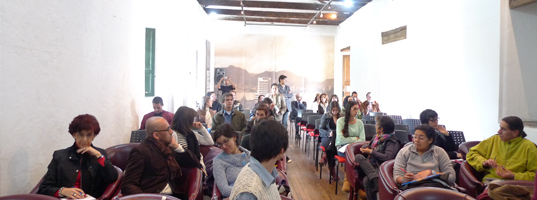
Universidad Nacional de Colombia, Museum Studies, Lecture with on line question broadcasting, March 29, 2011
Site and Activities: Medellin, Colombia, Centro de Desarrollo Cultural Moravia (host)
* Visits to Museo de Arte Moderno and Museos de Antioquia
* Discussions with staff and supporters of Casa de Integracion Afrocolombiana – five (5) participants
* Lecture at Centro de Desarrollo Cultural Moravia on the United States Capitol Visitor Center, interpretation of African Americans in US museums including Afrocolombians to gain public trust – audience forty to forty-five (40 to 45) participants
Accomplishments
The discussion at the Casa de Integracion Afrocolombiana provided the US Cultural Envoy a perspective on the issues that the Museo Nacional needs to interpret. Additionally, the discussion gave a voice to the young Afrocolombians with political interest to collectively improve the lives of those with fewer options. The community center itself highlighted the City of Medellin’s and the region’s proactive steps to help, down to the neighborhood level, the lives of its citizens, as well as the newly displaced from the countryside fleeing violence. The lecture at the Centro de Desarrollo Cultural Moravia was well attended by the public and was really a testament to recruiting efforts of the Director, Carlos Uribe. The goal to demonstrate the striking difference between Bogota’s and Medellin’s efforts to support their communities was met.
Site and Activities:Quibdo, Colombia, Center of Afrocolombian Cultures (host)
* Discussion on the creation of a cross cultural or Afrocolombian focused museum or center. The meeting was attend by fourteen (14) individuals that included a Ministry of Culture, University Faculty, Catholic priest and the setting Governor of State of Chocó (Malcom Cordoba, Gobernacion Chocó)
Accomplishments
Giovanni Cordoba, Director of the Center of Afrocolombian Cultures, wants to assure that the region Chocó has a museum or center of substance that can highlight Afrocolombians. Exactly what the entity should be is the question that has to be resolved before a strategic plan can be developed. After a preliminary meeting with Mr. Cordoba, his convening session’s goal was refined to establish a group of stakeholders who would move the project forward. Thus, the stakeholders meeting did acknowledge the US Cultural Envoy’s advice for a focus group to be established to shape the mission and vision of the entity. Also, whatever entity is established will need to be funded and maintained largely with funds outside the government. Therefore, fundraising/partnering has to be a key element of the much need strategic plan. The group’s preliminary proposal is being circulated.
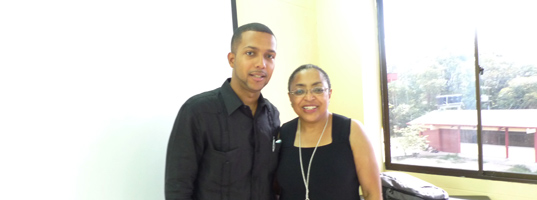
Malcom Cordoba, Gobernacion Chocó (Governor of Chocó) with US Cultural Envoy, Quibdo Gathering, March 26, 2011
Site and Activities: Barranquilla, Colombia, Museo del Caribe (Host)
* Tour of the new facility
* Presentation “Education in the Museum: Reaching New Audiences.” The presentation launched the Museo del Caribe inaugural education programs – 100 participants.
* Discussion with the education department centered on building committees of educators to help develop and evaluate education programs, as well as foster and maintain public trust.
Accomplishments
The opportunity to speak during the launch of the museum’s education program gave the small staff the opportunity ask the fundamental question, “how do you do all that needs to be done with a small staff of four people?” Thus, the discussion of volunteer programs and engaging teachers as active participants while classes visit the museum was timely. As the new facility matures, educators continuing to be involved will help maintain attendance as the tourist market is being built. The museum is located in an economic development area which is planned to have more tourist attractions in the coming years. The goal of establishing a dialogue around education must be continuously monitored and cultivated—this is a major component of the public trust that the museum must maintain. The Mueso del Caribe’s impressive facility, with exhibitions that range from interactive computer stations to simple hands-on “please touch” manipulatives, has a well developed approached to exploring the people, cultures and environments of the region.
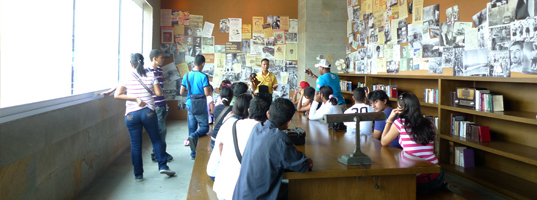
Museo del Caribe, Barranquilla, Colombia, Tribute to Local writers including Nobel Laureate Gabriel Garcia Marquez, March 30, 2011
Closing
Overall, the US Cultural Envoy program provided a museum professional to discuss strategic solutions to significant institutions’ issues on collecting and interpreting cultural property, as well as a direct link to information available to the United State’s 18,000 plus organizations. The project did open the door to the fact that more could be done to support Colombia’s museum and cultural community. The Cultural Envoy has agreed to share information and professional advice, and would welcome future involvement in the start-up project in Quibdo as well as continued refinement of Colombia’s standards on collection management. Lastly, any project that continues efforts to establish a multi-year approach to developing an interpretative program for Afrocolombian history and culture would not only be a milestone for the Museo Nacional but would also complement the US Envoy’s professional interests and inform her personal work.
The logistics for the twelve-day program went well with only minor changes from the outlined scheduled. The Envoy did make adjustments to lecture and discussion formats based on the needs of the host institution. The Culture Officer, Rex Moser, and Cultural Specialist, Marie C. Prieto, are to be commended for an outstanding, very busy, program. Marie C. Prieto was particularly sensitive to making sure each host institution’s representative was timely, and properly briefed on what was expected during the course of the visit.
The US Embassy public relations staff arranged newspaper interviews in every city and one very brief television segment on a style show. The visit was aided by printed and on-line material provided by the American Association of Museums.

